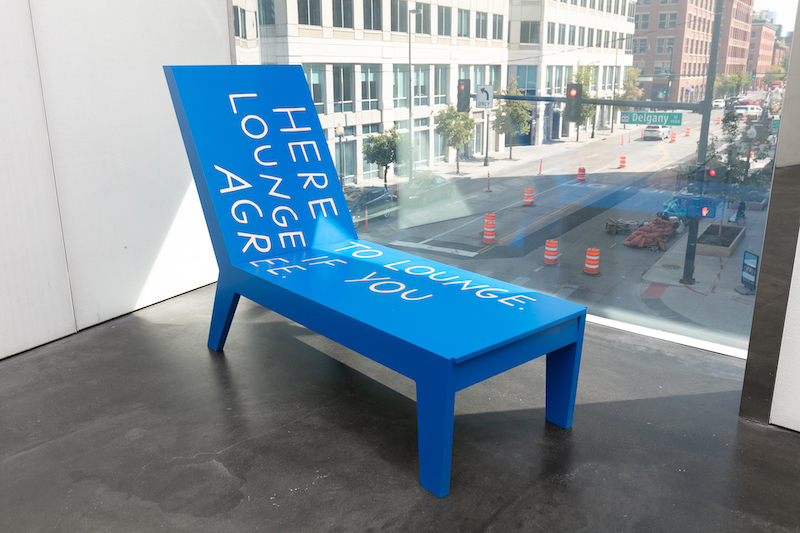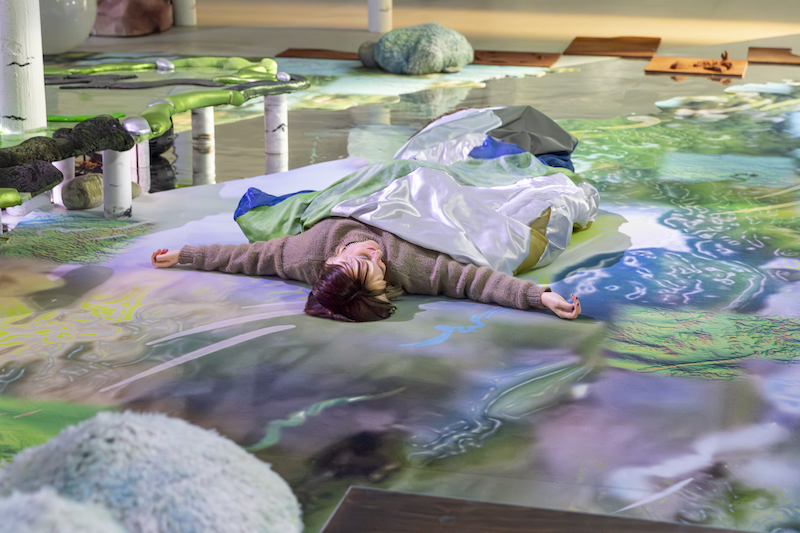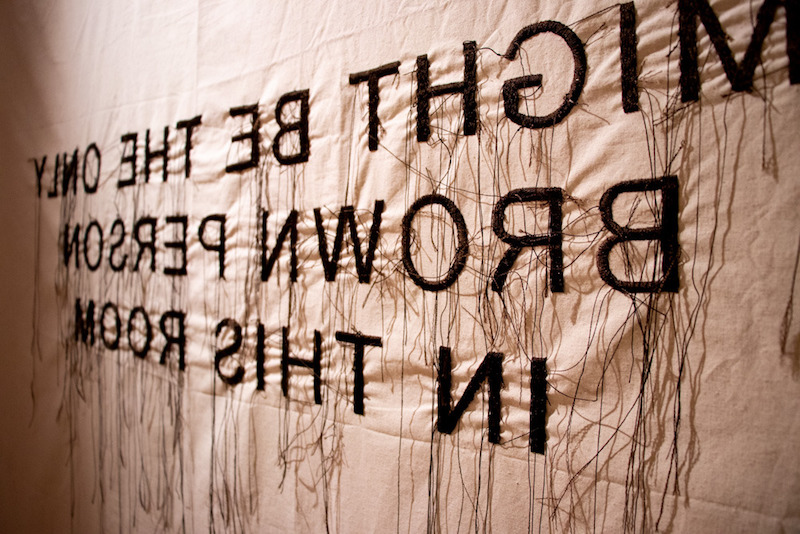by Alison Hugill // Sept. 13, 2024
This article is part of our feature topic Accessibility.
The question of “access” is a far-reaching one—it can be as simple as the architecture of an entry-way or as complex as the many invisible barriers put in place to reinforce institutional hierarchies. In art spaces, artists and visitors constantly encounter issues of accessibility, from the legibility of a press release to the font size of a wall text to the number of benches and ramps on offer and the backgrounds of the artists on view. In many cases, the content of the work addresses these disparities head-on.

Shannon Finnegan: ‘Do you want us here or not,’ 2020, MCA Denver, Denver, CO, fabrication by Joshua Bemelen // Photo by Wes Magyar
We covered this topic in 2020 and received so many compelling contributions that we decided to revisit it again. For our last issue on “Accessibility,” we spoke with New York–based artist Shannon Finnegan, who inserts interventions such as benches and cushions—with messages reading things like “This exhibition has asked me to stand for too long. Sit if you agree”—directly into exhibition spaces, advocating for accessibility on an immediate level. We also spoke to choreographer Jerron Herman, who explores movement and performance as a site for bodies to relate and celebrate the sensory awareness of being, experienced and understood from the vantage point of Disability. Taking an architectural perspective, we interviewed the founders of the DisOrdinary Architecture Project, a UK-based practice that seeks to develop new processes of spatial design and spatial justice in the built environment.
As contributor Noëlle BuAbbud aptly explained in her introduction to an interview with the Sickness Affinity Group at that time: “Contemporary cultural production is upheld by structures that are exclusive, extractive and exhausting. Artists and cultural workers internalize the harmful and delusional idea that, in order to participate in a creative field, they must forgo their collective needs and well-being and accept (with gratitude) crumbs of exposure and funding. The toxicity of this environment inhibits innovation and frequently leads to burn-out.” This very real experience of artists in the so-called “art world,” coupled with a host of other potential barriers, makes accessibility an urgent topic for our consideration.

Ciara Barker: ‘Fascination for the Outside,’ 2019 // Courtesy of the Artist
For this issue, we’ll look at an exhibition at the transmediale studio, housed in Wedding’s silent green venue, where Irish artist Ciara Barker presents ‘Libraries of Rest,’ opening during this year’s Berlin Art Week. Curated by Aoife Donnellan and featuring a soundscape by Mankyy, ‘Libraries of Rest’ imagines the future of restful spaces and practices, divorced from productivity, by cultivating an environment where care is prioritize and rest is celebrated.

melanie bonajo, Theatre HORA, Daniel Cremer, Yanna Rüger: ‘School of Lovers,’ 2023 at ShedHalle Zurich // Photo by Laila Kaletta and ProtoZone13, Shedhalle Zurich, 2023
Contributor William Kherbek will interview Dutch artist and filmmaker melanie bonajo about their recent project ‘School of Lovers,’ created in collaboration with Daniel Cremer and Yanna Rüger, and the inclusive Theater HORA and recently displayed at the Kunsthalle Mainz. The work considers the subject of love and intimacy for people with and without disabilities. The project asks: “What kind of school would it have been if we had learnt all the things that nobody taught us in reality? How to feel and communicate a yes and a no in your body; how to flirt, maintain your boundaries, touch with care and how to love yourself?”

Carla Abiles: ‘Premisa,’ 2024, 250×150 cm, hand embroidery on cotton fabric // Courtesy of the artist, photo by Violeta Espinosa
In October, Dehlia Hannah will profile the work of artist Carla Abilés, who uses embroidery as a mode of resistance, exploring the realities of immigration in Germany and the kinds of work, much of which is undertaken in the household, that particularly immigrant women perform out of necessity upon arrival. With her embroidered text ‘I might be the only brown person in this room,’ Abilés points to the racialized dimensions of access in German art spaces, as well. Contributor Aoife Donnellan will also speak to Raquel Meseguer Zafe, a UK-based dance theater practitioner who founded Unchartered Collective in 2016 to create theatrical encounters that explore the lived experience of invisible disability.
Exploring access in its various dimensions, our featured topic takes disability and racial justice to be at the core of the contemporary need to re-imagine art spaces, both architecturally as well as with regard to their often harmful internal power structures.



















